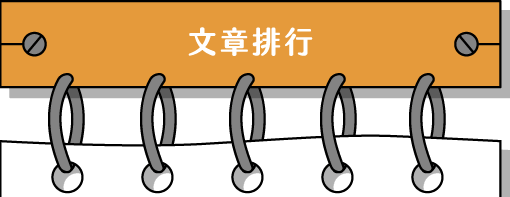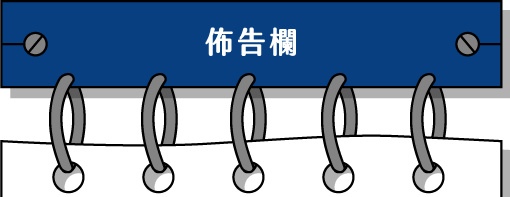Chatbots for Marketing: AI vs NLP Options

This not only improves efficiency but also enhances the user experience through self-service options. Clients will access information and complete transactions at their convenience, leading to boosted satisfaction and loyalty. By 2026, it is estimated that the market for chatbots would exceed $100 billion. And that makes sense given how much better customer communications and overall customer satisfaction can be achieved with NLP for chatbots.
It is mainly used for creating text-based interfaces, handling input/output operations, managing terminal windows, and controlling cursor movement. You’ll experience an increased customer retention rate after using chatbots. It reduces the effort and cost of acquiring a new customer each time by increasing loyalty of the existing ones. Chatbots give the customers the time and attention they want to make them feel important and happy. Through NLP, it is possible to make a connection between the incoming text from a human being and the system generated a response.
chatbot-iiitdwd
Master Tidio with in-depth guides and uncover real-world success stories in our case studies. Discover the blueprint for exceptional customer experiences and unlock new pathways for business success. The use of Dialogflow and a no-code chatbot building platform like Landbot allows you to combine the smart and natural aspects of NLP with the practical and functional aspects of choice-based bots.

In this guide, one will learn about the basics of NLP and chatbots, including the fundamental concepts, techniques, and tools involved in building them. NLP is a subfield of AI that deals with the interaction between computers and humans using natural language. It is used in chatbot development to understand the context and sentiment of the user’s input and respond accordingly.
In this guide, we’ve provided a step-by-step tutorial for creating a conversational AI chatbot. You can use this chatbot as a foundation for developing one that communicates like a human. The code samples we’ve shared are versatile and can serve as building blocks for similar AI chatbot projects.
It enables machines to understand, interpret, and generate human-like text, making it an essential component for building conversational agents like chatbots. Using artificial intelligence, particularly natural language processing (NLP), these chatbots understand and respond to user queries in a natural, human-like manner. As technology advances, chatbots are used to handle more complex tasks — and quickly — while still providing a personalized experience for users. Natural language processing (NLP) enables chatbots to process the user’s language, identifies the intent behind their message, and extracts relevant information from it. For example, Named Entity Recognition extracts key information in a text by classifying them into a set of categories.
How to Build an NLP Chatbot?
The trained model will serve as the brain of your chatbot, enabling it to comprehend and generate human-like responses. Natural Language Processing (NLP) is a branch of AI that focuses on the interaction between human and computer language. NLP algorithms and models are used to analyze and understand human language, allowing chatbots to understand and generate human-like responses. Whether or not an NLP chatbot is able to process user commands depends on how well it understands what is being asked of it.
9 Chatbot builders to enhance your customer support – Sprout Social
9 Chatbot builders to enhance your customer support.
Posted: Wed, 17 Apr 2024 07:00:00 GMT [source]
For computers, understanding numbers is easier than understanding words and speech. When the first few speech recognition systems were being created, IBM Shoebox was the first to get decent success with understanding and responding to a select few English words. Today, we have a number of successful examples which understand myriad languages and respond in the correct dialect and language as the human interacting with it. Chatbots can provide immediate responses, eliminating waiting times for users and improving overall satisfaction. By automating tasks and providing efficient customer support, businesses can reduce the need for extensive human resources, resulting in cost savings. To follow this tutorial, you should have a basic understanding of Python programming and some experience with machine learning.
The thing to remember is that each of these NLP AI-driven chatbots fits different use cases. Consider which NLP AI-powered chatbot platform will best meet the needs of your business, and make sure it has a knowledge base that you can manipulate for the needs of your business. But companies are often left wondering which approach to building a chatbot would truly benefit them – Decision Tree or Natural Language Processing (NLP) based Chatbots. In this blog, we will delve deeper into the two types of chatbots in the market, the difference between them, and what type your business could reap the benefit from. The field of chatbots continues to be tough in terms of how to improve answers and selecting the best model that generates the most relevant answer based on the question, among other things. Deploy a virtual assistant to handle inquiries round-the-clock, ensuring instant assistance and higher consumer satisfaction.
Using artificial intelligence, these computers process both spoken and written language. The difference between NLP and chatbots is that natural language processing is one of the components that is used in chatbots. NLP is the technology that allows bots to communicate with people using natural language. To design the bot conversation flows and chatbot behavior, you’ll need to create a diagram.
Introduction to NLP
This step is crucial for accurately processing user input and providing relevant responses. Through spaCy’s efficient preprocessing capabilities, the help docs become refined and ready for further stages of the chatbot development process. There are many different types of chatbots created for various purposes like FAQ, customer service, virtual assistance and much more. Chatbots without NLP rely majorly on pre-fed static information & are naturally less equipped to handle human languages that have variations in emotions, intent, and sentiments to express each specific query.
Apps such as voice assistants and NLP-based chatbots can then use these language rules to process and generate a conversation. With the rise of generative AI chatbots, we’ve now entered a new era of natural language processing. But unlike intent-based AI models, instead of sending a pre-defined answer based on the intent that was triggered, generative models can create original output. This is where the AI chatbot becomes intelligent and not just a scripted bot that will be ready to handle any test thrown at it. The main package we will be using in our code here is the Transformers package provided by HuggingFace, a widely acclaimed resource in AI chatbots.
By converting text into vector representations (numerical representations of the meaning of the text), machines can overcome this limitation. Compared to a traditional search, instead of relying on keywords and lexical search based on frequencies, vectors enable the process of text data using operations defined for numerical values. These are some of the basic steps that every NLP chatbot will use to process the user’s input and a similar process will be undergone when it needs to generate a response back to the user. Based on the different use cases some additional processing will be done to get the required data in a structured format. A simple and powerful tool to design, build and maintain chatbots- Dashboard to view reports on chat metrics and receive an overview of conversations.
This includes offering the bot key phrases or a knowledge base from which it can draw relevant information and generate suitable responses. Moreover, the system can learn natural language processing (NLP) and handle customer inquiries interactively. Many businesses are leveraging NLP services to gain valuable insights from unstructured data, enhance customer interactions, and automate various aspects of their operations.
If so, you’ll likely want to find a chatbot-building platform that supports NLP so you can scale up to it when ready. A question-answering (QA) model is a type of NLP model that is designed to answer questions asked in natural language. When users have questions that require inferring answers from multiple resources, without a pre-existing target answer available in the documents, generative QA models can be useful.
Chatbots powered by NLP are less prone to misunderstanding or misinterpreting user input, leading to more accurate responses and reducing the risk of human error. In your bot’s code, integrate the LUIS SDK to process user input and extract intents and entities. In summary, understanding NLP and how it is implemented in Python is crucial in your journey to creating a Python AI chatbot. It equips you with the tools to ensure that your chatbot can understand and respond to your users in a way that is both efficient and human-like.
Human reps will simply field fewer calls per day and focus almost exclusively on more advanced issues and proactive measures. Freshworks has a wealth of quality features that make it a can’t miss solution for NLP chatbot creation and implementation. Some of you probably don’t want to reinvent the wheel and mostly just want something that works. Thankfully, there are plenty of open-source NLP chatbot options available online.

Rule-based chatbots are based on predefined rules & the entire conversation is scripted. They’re ideal for handling simple tasks, following a set of instructions and providing pre-written answers. They can’t deviate from the rules and are unable to handle nuanced conversations.
Here are three key terms that will help you understand how NLP chatbots work. In the current world, computers are not just machines celebrated for their calculation powers. Today, the need of the hour is interactive and intelligent machines that can be used by all human beings alike. For this, computers need chatbot with nlp to be able to understand human speech and its differences. Chatbots can be available around the clock, providing assistance and information to users at any time, which is especially useful for global audiences. Remember, overcoming these challenges is part of the journey of developing a successful chatbot.
NLP or Natural Language Processing Chatbots
There are many NLP engines available in the market right from Google’s Dialog flow (previously known as API.ai), Wit.ai, Watson Conversation Service, Lex and more. Some services provide an all in one solution while some focus on resolving one single issue. Session — This essentially covers the start and end points of a user’s conversation. Intent — The central concept of constructing a conversational user interface and it is identified as the task a user wants to achieve or the problem statement a user is looking to solve. And if you’d rather rely on a partner who has expertise in using AI, we’re here to help.
Do We Dare Use Generative AI for Mental Health? – IEEE Spectrum
Do We Dare Use Generative AI for Mental Health?.
Posted: Sun, 26 May 2024 07:00:00 GMT [source]
Natural language processing is the current method of analyzing language with the help of machine learning used in conversational AI. Before machine learning, the evolution of language processing methodologies went from linguistics to computational linguistics to statistical natural language processing. In the future, deep learning will advance the natural language processing capabilities of conversational AI even further. All the above content which gives an explanation to implement the Chatbot application hold lesser reference to the data pre-processing techniques for developing the chatbot application. Thus, some of the techniques that requires further exploration for adequate cognizance to effectively delve into the chatbot data pre-processing are tokenization, lemmatization, stemming and stop word removal. The deep NLP holds an end-to-end deep learning model, and applies the deep neural network architecture with various deep learning algorithms for classifying the text-based inputs from the neural network.
Put simply, NLP is an applied artificial intelligence (AI) program that helps your chatbot analyze and understand the natural human language communicated with your customers. In recent years, we’ve become familiar with chatbots and how beneficial they can be for business owners, employees, and customers alike. Despite what we’re used to and how their actions are fairly limited to scripted conversations and responses, the future of chatbots is life-changing, to say the least. This function holds plenty of rewards, really putting the ‘chat’ in the chatbot. Natural language processing can be a powerful tool for chatbots, helping them understand customer queries and respond accordingly. A good NLP engine can make all the difference between a self-service chatbot that offers a great customer experience and one that frustrates your customers.
There is also a wide range of integrations available, so you can connect your chatbot to the tools you already use, for instance through a Send to Zapier node, JavaScript API, or native integrations. If you don’t want to write appropriate responses on your own, you can pick one of the available chatbot templates. In fact, this technology can solve two of the most frustrating aspects of customer service, namely having to repeat yourself and being put on hold. In our example, a GPT-3.5 chatbot (trained on millions of websites) was able to recognize that the user was actually asking for a song recommendation, not a weather report. Self-service tools, conversational interfaces, and bot automations are all the rage right now. Businesses love them because they increase engagement and reduce operational costs.
Once satisfied, deploy your bot to platforms like Azure Bot Service or other channels. Almost every customer craves simple interactions, whereas every business craves the best chatbot tools to serve the customer experience efficiently. An AI chatbot is the best way to tackle a maximum number of conversations with round-the-clock engagement and effective results. You can foun additiona information about ai customer service and artificial intelligence and NLP. Part of bot building and NLP training requires consistent review in order to optimize your bot/program’s performance and efficacy. NLP AI-powered chatbots can help achieve various goals, such as providing customer service, collecting feedback, and boosting sales.
Put your knowledge to the test and see how many questions you can answer correctly. This command will start the Rasa shell, and you can interact with your chatbot by typing messages. Install the ChatterBot library using pip to get started on your chatbot journey.
Once it’s done, you’ll be able to check and edit all the questions in the Configure tab under FAQ or start using the chatbots straight away. Here’s an example of how differently Chat GPT these two chatbots respond to questions. Some might say, though, that chatbots have many limitations, and they definitely can’t carry a conversation the way a human can.
Natural language processing (NLP) is a branch of artificial intelligence that helps computers understand, interpret, derive meaning, manipulate human language, and then respond appropriately. Businesses all over the world are turning to bots to reduce customer service costs and deliver round-the-clock customer service. NLP has a long way to go, but it already holds a lot of promise for chatbots in their current condition. The building of a client-side bot and connecting it to the provider’s API are the first two phases in creating a machine learning chatbot. All in all, NLP chatbots are more than just a trend; they are a strategic asset for companies seeking to thrive in the digital age.
As the topic suggests we are here to help you have a conversation with your AI today. To have a conversation with your AI, you need a few pre-trained tools which can help you build an AI chatbot system. In this article, we will guide you to combine speech recognition processes with an artificial intelligence algorithm. In this article, we will create an AI chatbot using Natural Language Processing (NLP) in Python. First, we’ll explain NLP, which helps computers understand human language.
Our goal is to democratize NLP technology thereby creating greater diversity in AI Bots. While NLP seems intimidating at first, it largely depends on the platform you use. When using an intuitive system like HappyFox Chatbot, implementation is simplified helping you get up and running quickly. If you’re interested in building chatbots, then you’ll find that there are a variety of powerful chatbot development platforms, frameworks, and tools available.
After the previous steps, the machine can interact with people using their language. All we need is to input the data in our language, and the computer’s response will be clear. If we want the computer algorithms to understand these data, we should convert the human language into a logical form. The NLP for chatbots can provide clients with information about any company’s services, help to navigate the website, order goods or services (Twyla, Botsify, Morph.ai). If you want to create a sophisticated chatbot with your own API integrations, you can create a solution with custom logic and a set of features that ideally meet your business needs.
Conversational AI combines natural language processing (NLP) with machine learning. These NLP processes flow into a constant feedback loop with machine learning processes to continuously improve the AI algorithms. Now, employees can focus on mission-critical tasks and tasks that impact the business positively in a far more creative manner as opposed to losing time on tedious repetitive tasks every day. You can use NLP based chatbots for internal use as well especially for Human Resources and IT Helpdesk. The best approach towards NLP is a blend of Machine Learning and Fundamental Meaning for maximizing the outcomes.
- Our chatbot creator helps with lead generation, appointment booking, customer support, marketing automation, WhatsApp & Facebook Automation for businesses.
- This function holds plenty of rewards, really putting the ‘chat’ in the chatbot.
- As the chatbot building community continues to grow, and as the chatbot building platforms mature, there are several key players that have emerged that claim to have the best NLP options.
In the next steps, we will navigate you through the process of setting up, understanding key concepts, creating a chatbot, and deploying it to handle real-world conversational scenarios. Conversational AI chatbots use generative AI to handle conversations in a human-like manner. AI chatbots learn from previous conversations, can extract knowledge from documentation, can handle multi-lingual conversations and engage customers naturally. They’re useful for handling all kinds of tasks from routing tasks like account QnA to complex product queries.
In the case of ChatGPT, NLP is used to create natural, engaging, and effective conversations. NLP enables ChatGPTs to understand user input, respond accordingly, and analyze data from their conversations to gain further insights. NLP allows ChatGPTs to take human-like actions, such as responding appropriately based on past interactions. You’re ready to develop and release your new chatbot mastermind into the world now that you know how NLP, machine learning, and chatbots function.
It will show how the chatbot should respond to different user inputs and actions. You can use the drag-and-drop blocks to create custom conversation trees. Some blocks can randomize the chatbot’s response, make the chat more interactive, https://chat.openai.com/ or send the user to a human agent. You can add as many synonyms and variations of each user query as you like. Just remember that each Visitor Says node that begins the conversation flow of a bot should focus on one type of user intent.
Sentiment Analysis identifies the emotional tone, and Question Answering the “answer” to a query. Recent advancements in NLP have seen significant strides in improving its accuracy and efficiency. Enhanced deep learning models and algorithms have enabled NLP-powered chatbots to better understand nuanced language patterns and context, leading to more accurate interpretations of user queries. NLP chatbots are powered by natural language processing (NLP) technology, a branch of artificial intelligence that deals with understanding human language.
Our Apple Messages for Business bot, integrated with Shopify, transformed the customer journey for a leading electronics retailer. This virtual shopping assistant engages users in real-time, suggesting personalized recommendations based on their preferences. It also optimizes purchases by guiding them through the checkout process and answering a wide array of product-related questions. Choosing the right conversational solution is crucial for maximizing its impact on your organization. Equally critical is determining the development approach that best suits your conditions.









